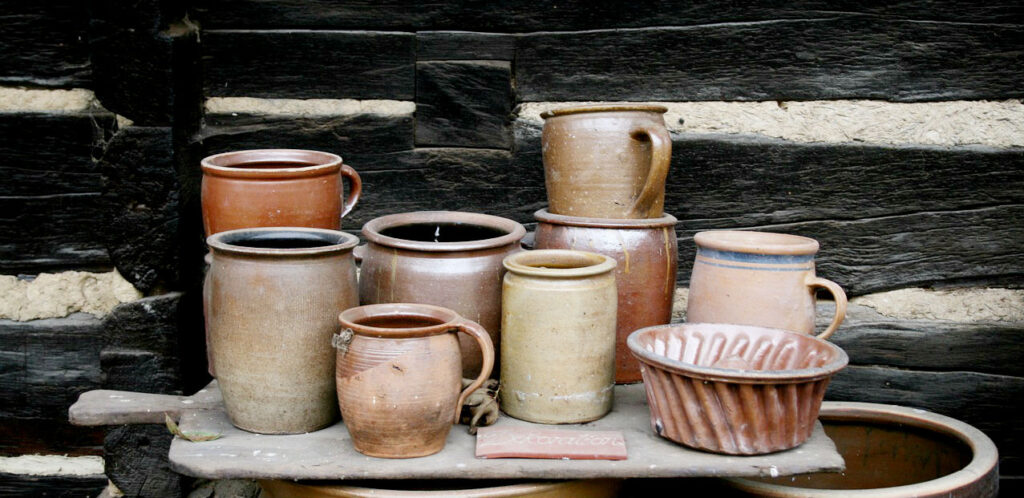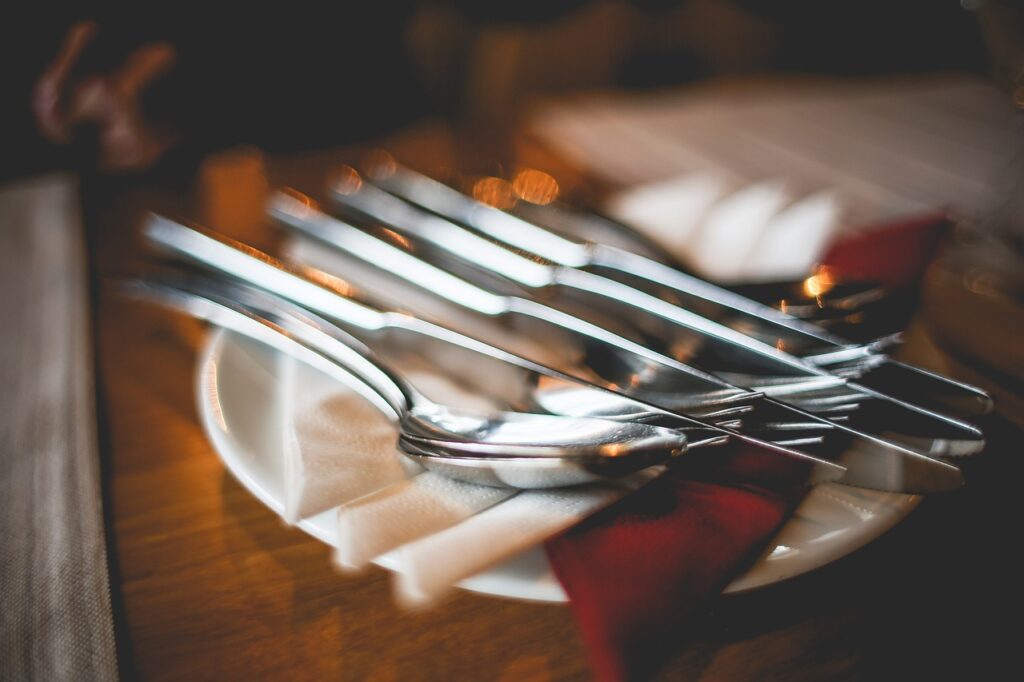Green Cookware: Is Ceramic Cookware Safe?
Cooking for your family is one of the most practical ways to care for them. You choose healthy ingredients, prepare meals you feel good about, and do your best to put nourishing food on the table. But there is another part of the process that deserves just as much attention: the cookware.
- Safe Cookware?
- History of Ceramics
- Is Ceramic Cookware Safe?
- Why Should You Use Ceramic Cookware?
- Disadvantages of Using Ceramic Cookware
- Final Thoughts
- Ceramic Cookware FAQs
- Is ceramic cookware toxic?
- Does ceramic have harmful coatings?
- Is ceramic better than Teflon for non-stick?
- Can ceramic withstand high heat?
- Is ceramic cookware scratch-resistant?
- Does ceramic leach chemicals when heated?
- Are ceramic non-stick properties long-lasting?
- Is ceramic cookware oven and dishwasher-safe?
- Does ceramic break easily?
Even if you buy clean, whole ingredients, unsafe cookware can introduce chemicals into the meals you worked hard to make healthy. Many people never question their pots and pans, yet cookware plays a major role in overall kitchen safety.
In today’s market, cookware companies make all kinds of bold claims. You will hear terms like green, eco-friendly, non-toxic, or ceramic-coated thrown around constantly. Ceramic cookware in particular has gained a lot of attention, but is it actually safe?
Safe Cookware?
If you’ve ever researched safe cookware, you’ve probably heard about the many dangers of certain materials and chemicals that are often used in today’s pots and pans, including non-stick varieties. Of course, non-stick isn’t the only dangerous kind of cookware, but it’s the easiest to recognize.
Toxic chemicals, such as the notorious Polytetrafluoroethylene (PTFE), are often found in many non-stick cookware varieties and are known to be unsafe.
So what happens when you and your family are exposed to small amounts of these chemicals over a long period of time? Well, let’s just say that the answers you read to that question may range widely from causing detrimental health conditions like cancer or Alzheimer’s to the idea that every kind of cookware is ‘probably safe’ as long as it’s being sold.
After all, if the cookware and chemical manufacturers tell us their products are safe, they must be telling us the truth, right?
I think we all know that plenty of dangerous substances and materials have been sold in the past that were anything but safe.
Unsafe cookware must be avoided at all costs for three reasons:
1.) The potential adverse health effects aren’t worth the “benefits” of more “versatile” cookware that contains dangerous chemicals or other reactive substances.
2.) Questionable cookware is easy to avoid as long as you’re ever-so-slightly informed, especially since safer cookware varieties are readily available.
3.) Research, lawsuits, and regulations have provided plenty of evidence that there’s been enough incriminating data over the years to give you a reason to doubt claims of safety regarding today’s widely sold cookware.
The good news is that there are safer kinds of cookware that can replace your non-stick pots and pans. There is absolutely no reason to continue to cook with toxic cookware. While there may be other kinds of cookware that I prefer, ceramic is definitely one solid alternative.
History of Ceramics
Ceramic cookware is one of the oldest kinds of cookware that has been used repeatedly through the centuries. The word “ceramics” originated from the Greek word keramikos, meaning “of pottery”, and from keramo,s meaning “potter’s clay”.
History tells us that the earliest ceramics made by humans were pottery objects made from clay, bone, bone ash, and animal fat. The earliest uses of ceramics in history aren’t known, but what is believed to be the oldest ceramic figurines were discovered in Czechoslovakia.
Throughout the millennia, ceramics were used for art, storage, and cooking. Ceramics have indeed played an integral role in human history.
Is Ceramic Cookware Safe?
Ceramic cookware is generally made of inorganic and non-metallic materials that are known to be non-toxic. That means that they don’t typically contain lead, cadmium, or other toxic metals. This is why many people opt to use ceramic cookware rather than non-stick pans, aluminum, copper, or other kinds of toxic cookware.
However, the questions surrounding the safety of ceramic cookware can’t be answered quite that easily. There are a few very important factors that you need to consider before purchasing any kind of ceramic cookware. As long as you consider the following considerations, ceramic cookware is a great, non-toxic option.
Important Considerations:
- Only Purchase 100% Ceramic Cookware
- Many Foreign Ceramics Contain Lead or Other Contaminants
- Ceramic Cookware is Fragile
- 100% Ceramic Cookware is Non-Reactive and Non-Toxic
- Non-Stick Ceramic Coated Cookware Isn’t the Same as Ceramic Cookware
- Never Use Ceramic That Isn’t Clearly Indicated as Safe For Food Use.
When it comes to purchasing quality ceramic cookware, a few things need to be observed. As we mentioned in the list above, it’s important that you only purchase your ceramic cookware if it’s 100% ceramic. It’s also crucial that the glaze doesn’t contain any toxic metals or other contaminants like lead. If you purchase ceramic products made in the US, this usually isn’t a problem.
Also, it’s worth mentioning that non-stick ceramic-coated metal cookware should not be considered a safe alternative to other potentially toxic cookware. Essentially, this kind of cookware is primarily metal, coated with a few layers of non-stick ceramic material that flakes off or is easily scratched over time, potentially allowing underlying materials and metals to leach into your food.
Why Should You Use Ceramic Cookware?
Ceramic cookware gives you the ability to prepare meals without worrying about toxic coatings or questionable materials. When you use high-quality ceramic, you have confidence that the food you are placing on the table is both nutritious and safe. Food safety is not only about what you cook but what you cook with, and cookware matters far more than many people realize.
Ceramic performs well in day-to-day cooking. It distributes heat evenly, retains warmth for longer periods, and many ceramic pieces are dishwasher safe for easy cleanup. It is also considered environmentally safe, since it is made without the synthetic chemical coatings used in traditional non-stick pans.
Another advantage is versatility. Ceramic cookware can tolerate high temperatures, works well on the stovetop or in the oven, and can even be used for refrigerator or freezer storage. Many pieces are microwave safe. Ceramic dishes also make attractive serving pieces, adding beauty to the table.
When choosing ceramic cookware, quality is critical. High-quality ceramic is durable, safe, and free from heavy metals. Cheaper foreign-made ceramics sometimes contain lead or questionable glazes, so choosing trusted brands is essential. If high-quality ceramic is not in your budget, there are other safe alternatives such as stainless steel, cast iron, or carbon steel.
Disadvantages of Using Ceramic Cookware
Ceramic cookware has many advantages, but it is not without drawbacks.
Common limitations include:
- Surface damage from scrubbing
The ceramic coating can scratch or lose its non-stick properties if abrasive tools or harsh cleaners are used. - Heavier weight
Ceramic pans tend to be heavier than stainless steel or aluminum cookware. - Risk of cracking
Ceramics can crack or chip if dropped or exposed to sudden temperature changes. - Higher cost for good quality
Pure, high-quality ceramic cookware is often more expensive than other safe materials. - Less long-term durability than cast iron or steel
Even with proper care, ceramic coatings typically do not last as long as cast iron or stainless steel. A ceramic pan can break if mishandled, while cast iron is extremely difficult to damage.
Ceramic cookware is a safe, attractive, and effective option when chosen carefully, but it is important to weigh both the benefits and limitations before deciding if it is the right fit for your kitchen.
Final Thoughts
When it comes to your family’s health and safety, the choices you make in the kitchen matter. Most people focus on buying clean ingredients, preparing nutritious meals, and keeping a tidy cooking space. Yet the cookware used every day is often overlooked, even though it plays a major role in whether your food remains truly safe.
Cookware marketing can be confusing, especially when so many brands make strong claims. Ceramic cookware can be a safe option as long as you choose high-quality, well-made products. Properly manufactured ceramic pieces are free from the toxic chemicals found in traditional non-stick pans, giving you confidence that your meals are not being contaminated.
Ceramic is only one of several safe cookware choices. Personally, ceramic is not my favorite option because high-quality pieces can be expensive, and durability varies. Cast iron is significantly stronger, although heavier. Stainless steel is another reliable and long-lasting choice. There is no single perfect option for every home. The best cookware is the one that fits your budget, your cooking habits, and your preferences.
As long as you choose a safe material such as ceramic, cast iron, stainless steel, carbon steel, or enameled cast iron, you are already avoiding the risks associated with questionable non-stick coatings. Your cookware should support your commitment to healthy meals, not work against it.
Choose well, take care of it, and enjoy the peace of mind that comes from a safer kitchen.
Ceramic Cookware FAQs
Is ceramic cookware toxic?
No. High-quality ceramic cookware does not contain PFAS chemicals such as PFOA, PTFE, or PFOS. Proper ceramic is considered a safe and non-reactive material.
Does ceramic have harmful coatings?
Quality ceramic cookware uses a lead-free, non-toxic glaze. Always research the brand you are purchasing to confirm that its glazing materials meet safety standards.
Is ceramic better than Teflon for non-stick?
Yes. Ceramic offers a naturally slick cooking surface without the concerns associated with Teflon-style coatings that can chip or degrade.
Can ceramic withstand high heat?
Ceramic can usually handle higher heat than traditional non-stick pans. However, proper cooking technique rarely requires the highest stove settings.
Is ceramic cookware scratch-resistant?
Ceramic is scratch-resistant but not scratch-proof. Metal utensils can still wear down the surface over time. Cast iron and stainless steel are more durable choices if scratch resistance is a top priority.
Does ceramic leach chemicals when heated?
No. When properly glazed, ceramic does not leach harmful substances at any typical cooking temperature.
Are ceramic non-stick properties long-lasting?
Ceramic non-stick can last several years with good care. Cast iron and stainless steel will generally last longer, especially for heavy daily use.
Is ceramic cookware oven and dishwasher-safe?
Many ceramic pieces are dishwasher and oven-safe, but this varies by brand. Check the manufacturer’s instructions to avoid damaging the glaze or handles.
Does ceramic break easily?
Ceramic is resistant to minor chips and cracks, but it can break if dropped or exposed to sudden temperature changes. Handle with care and avoid shifting it from extreme heat to cold conditions.


